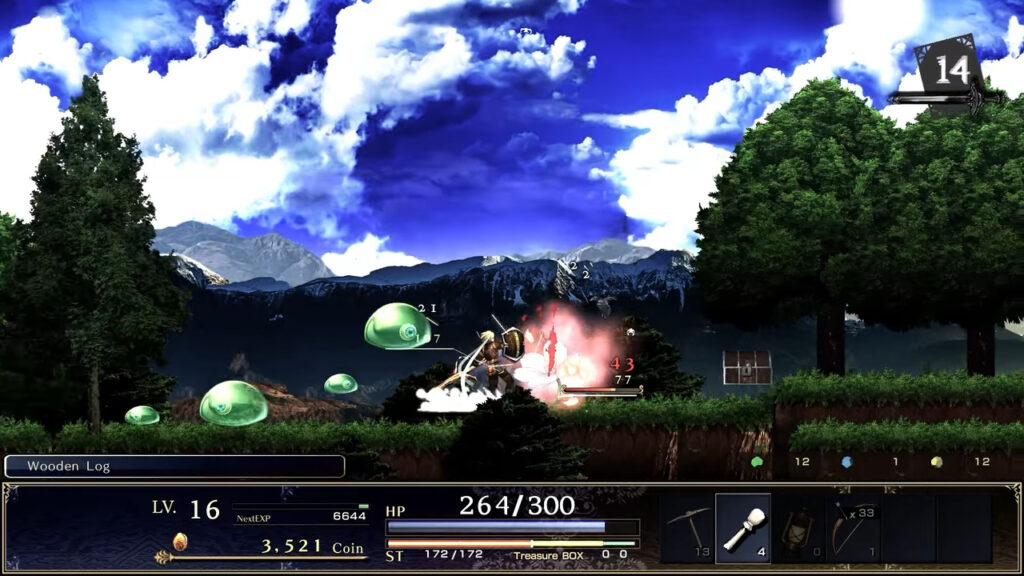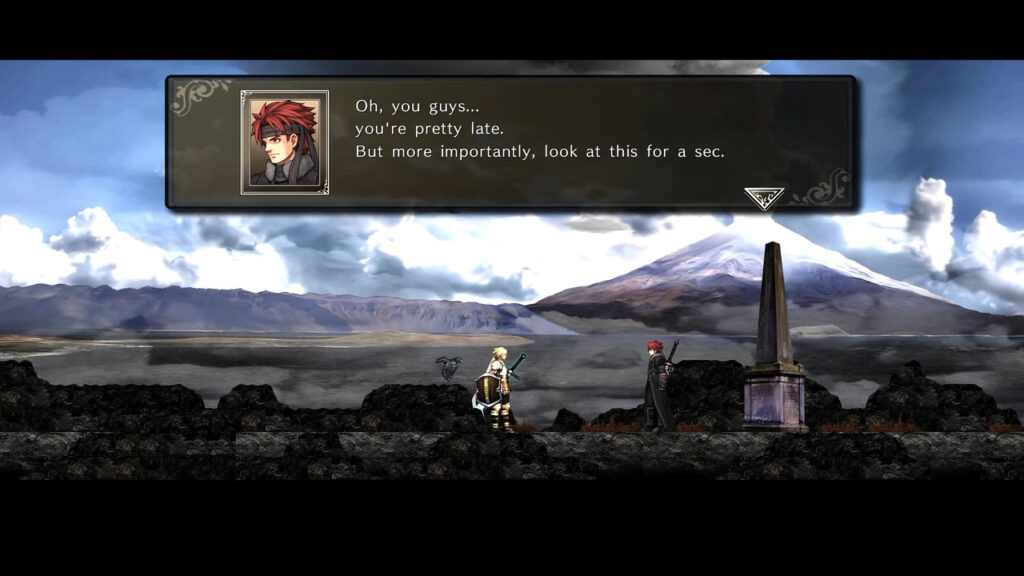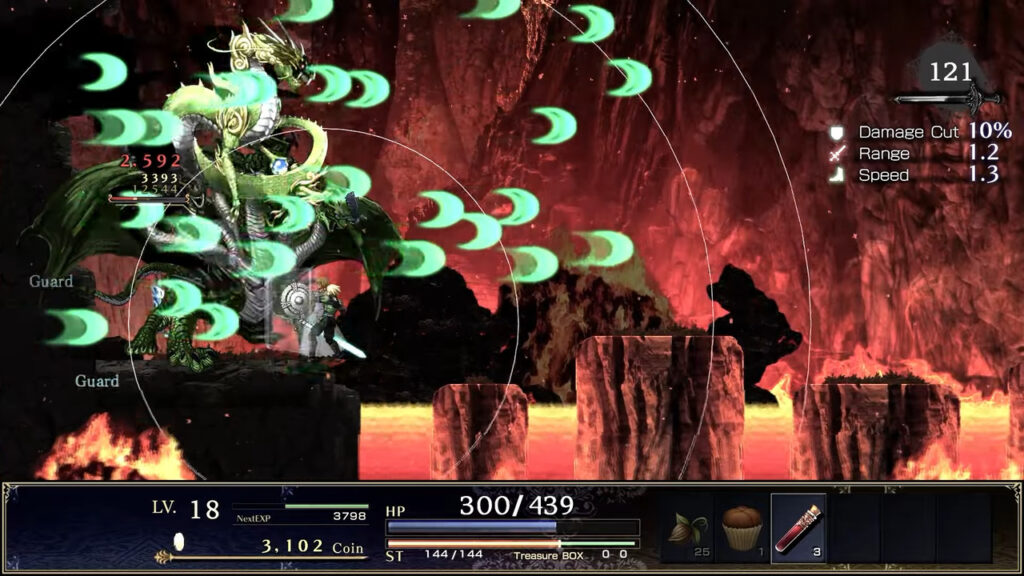
ASTLIBRA Revision – Review
The story behind ASTLIBRA Revision’s development may actually be more interesting than the game itself. As the Revision in the title indicates, this is technically a remake of the original ASTLIBRA, a freeware title developed over the course of 14 years by one-man indie developer KEIZO. For Revision, the full-fledged re-release of his passion project, a full team got on board with him, and the game was further fleshed out. ASTLIBRA Revision got a Steam release in October of 2022 and around this time, KEIZO participated in an AMA on Reddit. If you’re interested in how the game grew into what it is today, this is definitely worth a read. Fast forward one year, and ASTLIBRA Revision has now made the jump to the Switch. The port seemed like a perfect opportunity to take a look at ASTLIBRA Revision, so join us as we take a look at KEIZO’s video game magnum opus.
Story
The aforementioned 14-year development cycle is something that is palpable in all aspects of the game, including the story. There are a lot of ideas here, and not all of them work equally well. Unfortunately, this results in a convoluted mess that lacks a clear narrative structure. Things start out simple enough, although the core premise is built on clichés. When we first meet ASTLIBRA Revision’s protagonist, he is still a young boy. A very lengthy prologue first shows how he and a girl are trying to escape their once peaceful village during an attack by monsters, before blacking out. When our nameless hero comes to, he is in the middle of nowhere and suffering from amnesia, with the girl nowhere to be seen. Instead, a talking crow named Karon wakes up beside him. The pair quickly become friends and make it their mission to return to the boy’s village. This is easier said than done, however, and our heroes spend the following eight years traveling the wilderness without encountering a single human.
After the 15-minute long (!) prologue scene, ASTLIBRA Revision’s story begins in earnest when the protagonist, now a young man, finally encounters a traveler. After a night around the campfire, this mysterious traveler disappears without a trace. This event is the beginning of an adventure involving not just time travel but also hopping between dimensions as well as magic. It’s as difficult to follow as it sounds. We wouldn’t be able to explain what happens next, but that is less about avoiding spoilers and more about the storyline not really making sense without a ton of detailed explanation. Fortunately, although the overarching storyline is a mess, ASTLIBRA Revision is populated by a varied cast of likable characters, and these do help in making the convoluted narrative easier to swallow. That said, the pacing with which these are introduced is awkward at times, as if KEIZO only came up with specific cast members several years down the line of development, shoehorning them in.
Graphics
The term ‘mixed bag’ fits ASTLIBRA Revision’s visuals to a tee. Character designs are generally not bad, even though they look a little dated. Character animations, however, are a different story, with stiff, limited movement. We also thought we’d never say this, but the overall hand-drawn aesthetic doesn’t quite work, and the game actually would have looked better with pixel art sprites instead of the uncanny midway solution shown here. The backgrounds look like stock photographs with a filter applied, resulting in a weird disconnect between the characters and the environment.
Sound
Fortunately, ASTLIBRA Revision’s audio fares a lot better than its visuals, at least when it comes to the soundtrack. There is plenty of variety in the tunes, as these range from atmospheric piano tunes to high-energy battle music. Voice acting is notably absent during story segments, although the game isn’t entirely devoid of voice work, as characters will still talk while performing specific combat moves. Sound effects are another highlight, adding the right amount of crunch and heft to combat.
Gameplay
As with the overarching story, ASTLIBRA Revision‘s gameplay is a hodgepodge of ideas, but here the end result works better and is a lot more interesting than what the narrative serves up. At its core, ASTLIBRA Revision is a side-scrolling ARPG, although one that borrows platforming mechanics from Metroidvanias and classic RPG puzzle mechanics as well. The game is structured around its narrative, presented as a series of isolated storylines with different characters that ultimately all come together over the course of the campaign. This structure is another area where the development cycle is noticeable, adding to the overall feeling of disjointedness, although the advantage here is that ASTLIBRA Revision is broken up into chunks that are easily digestible. That said, some of the chapters don’t fit in quite as well as others and perhaps could have been cut, resulting in a more straightforward game.
A lot of emphasis is put on ASTLIBRA Revision’s combat, and we’re happy to report that the mechanics for this are easily the best of what the game has to offer. If you’re familiar with the classic Castlevania games, you’ll immediately get struck by a feeling of familiarity, in the best way possible. There is an elegant simplicity to the basic hack ‘n slash approach combined with the smooth flow of dodging and blocking enemy attacks. Successfully dishing out damage will add to your ST-gauge, which you can use to unleash a special magic attack or summon a creature to fight alongside you for a short while. If you chain your attacks, you’ll eventually put an enemy in a Break state, allowing you to deal even more damage. Combat feels responsive and snappy, and given that you’ll be doing a lot of grinding throughout your runtime, we can only welcome this approach as it avoids tedium. In fact, grinding feels rewarding, as there is a significant boost in power whenever your character levels up, earns a new skill from the skill tree or masters equipment. There are a lot of ways to advance stats here, and it always feels like you’re working towards something.
On the other hand, ASTLIBRA Revision’s RPG side could have done with better signposting. It’s not always clear what to do next, or where you need to go. We had to resort to a guide several times as we got stuck, and more often than not, we wouldn’t have figured out what the game wanted on our own. We’re not sure whether or not the seeming disconnect between certain in-game hints and player actions can be attributed to the same issues that affected the flow of the story, but this is definitely a game that doesn’t hold your hand. Usually, we don’t mind this, but in the case of ASTLIBRA Revision, the game is too far on the other side of the spectrum. While the combat system is easy to understand, the RPG half doesn’t stick to the same foundation throughout, fairly regularly introducing new ideas and abandoning others. It’s as if KEIZO changed his mind several times midway during development but then didn’t bother reworking older parts of the game. A good example of this involves having to talk to seemingly random NPCs in order to progress the story forward, even if these characters have no further bearing on what is going on.
We certainly can’t say that you’re not getting your money’s worth in sheer terms of content, with the game clocking in at around 40 hours for a mere $25 asking price. ASTLIBRA Revision also boasts several new additions compared to the earlier freeware version, so even returning players have something to look forward to. Add to this that the game can be played at various difficulty levels, with the top ones aptly named ‘Hell’ and ‘Impossible’, and you’ve got a game that has quite a bit of replayability to offer as well. It all adds up to a hefty package of content, although we would have preferred it had some of ASTLIBRA Revision’s fat been trimmed.
Conclusion
Ultimately, ASTLIBRA Revision doesn’t bring anything new or revolutionary to the table in terms of gameplay, but it doesn’t really need to. This is the result of a decade-and-a-half labor of love, and while it certainly has its shortcomings, these are more than likely the result of the game spending perhaps too long in the oven rather than not long enough. While we definitely could have done with a more focused approach, especially in terms of story, there is enough of interest here to warrant at least a look if the game sounds remotely appealing to you.










No Comments